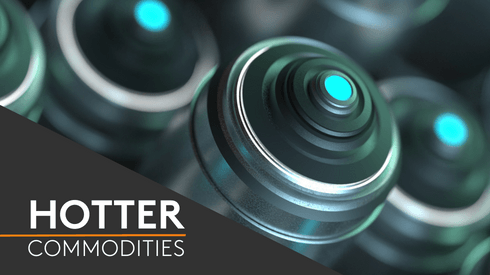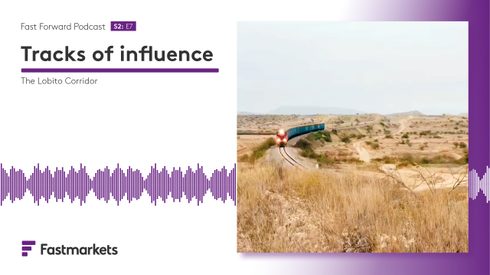Key takeaways:
- Neo Performance Materials projects the rare earth magnet market for electric vehicle motors in Europe and the US could reach $5 billion by 2035, driven by demand for greater power, torque, and efficiency in EVs.
- With China controlling 80–90% of global magnet production, automakers and policymakers in the EU and US are prioritizing supply diversification, domestic manufacturing and recycling to reduce reliance on a single country.
- Significant investments in Estonia, Texas, and South Carolina aim to expand NdFeB magnet production in the West, supported by policy measures such as the EU Critical Raw Materials Act and the US Inflation Reduction Act.
Neo Performance Materials – a Canadian producer of rare earth magnetics and specialty material – estimates that the magnet market for rare earth magnets in electric vehicle (EV) motors could be worth $5 billion in Europe and the US by 2035. The company’s chief executive officer mentioned this during an earnings call. “What lithium and cobalt are to batteries, rare earth magnets are to electric vehicle motors,” Neo CEO Rahim Suleman said on November 10.
The number of EVs produced and sold outside China should reach 40 million by 2035. According to Bank of America’s forecasts, Suleman estimated that these vehicles would require around 60,000 tonnes of magnets. This amount would be worth around $5 billion at current prices.
Global dynamics of the magnet market
Globally, 10-20% of rare earth magnets are produced outside China – with Japan being the only other significant producer. However, Neo estimates that 60% of total magnet supply is assembled into motors purchased and used outside China. As a result, the magnet market benefits from this diverse production.
Rare earth magnets are currently used in around 85% of electric vehicle motors manufactured. Suleman said that this material reduces weight and increases the range of EV batteries.
“There is [still] no better technical solution for delivering the most power, torque or precision to a finely tuned electric motor,” Suleman said.
Regional opportunities in the magnet market
“All the major OEMs [original equipment manufacturers] have told us that they cannot depend on one single jurisdiction for the magnets needed for EU and US vehicles,” Neo said in an investor presentation in November. “The industry benchmark for automotive [companies] is at least four individual supplier options and three sourcing countries.” This highlights the regional opportunities in the expanding magnet market.
The EU Critical Raw Materials Act sets targets for OEMs to source no more than 60% of magnets from one country outside the EU. Also, 40% of processed material must originate domestically. Furthermore, 15% must come from recycled sources.
In the US, the Inflation Reduction Act aims to incentivize near-shoring of EV production.
Neo has production facilities in Canada, the US, Europe, and China. Moreover, the company produces bonded rare earth magnetic powders and magnets in Thailand. These are used in a Honda/Daido EV motor.
Magnet market manufacturing expands in the West
China used to mine 90% of the world’s supply of rare earths. However, this figure is now closer to 60%, according to industry estimates.
“The next three phases of the value chain – rare earth separation, making metals and alloys, and manufacturing rare earths magnets – are absolutely dominated by China today. Suleman emphasized that China holds a share of 80-90% in these areas. This reflects the current state of the magnet market.
Manufacturing plants for neodymium, iron and boron (NdFeB) magnets are currently under construction in Europe and the US.
New magnet market infrastructure projects
Neo is building Phase 1 of a plant in Estonia, designed to produce sintered 2,000 tonnes per year of NdFeB magnets for EV motors. This will be completed by the end of 2026. This capacity will be enough for around 1 million electric vehicles.
In the US, rare earth miner MP Materials is building a facility in Texas to produce 1,000 tpy of sintered NdFeB magnets. The company has concluded a long-term binding supply agreement with General Motors (GM).
And E-Vac – the US subsidiary of German magnet manufacturer VAC – announced on December 14 its plans to build a NdFeB magnet plant in South Carolina. This will start by late fall 2025. In January, VAC concluded a long-term binding supply agreement with GM.
Policy support and history of the magnet market
Political momentum is building in the US for the introduction of a tax credit for domestically-produced rare earth magnets.
The magnet market for NdFeB magnets is large and well-established, Fastmarkets understands.
NdFeB magnets were invented 40 years ago – by John Croat at US carmaker General Motors and Masato Sagawa at Japanese conglomerate Sumitomo. These magnets quickly found their way into most areas of modern life.
These magnets were used to make hard disc drives of computers smaller and lighter. Nowadays, they are used in tiny sensors, medical devices, large industrial motors, robots and pumps.






